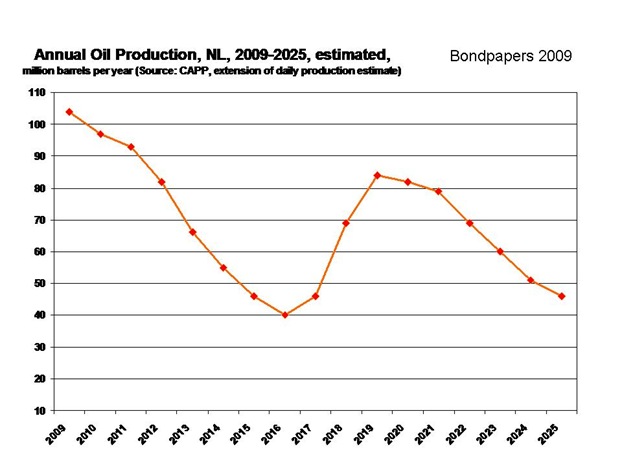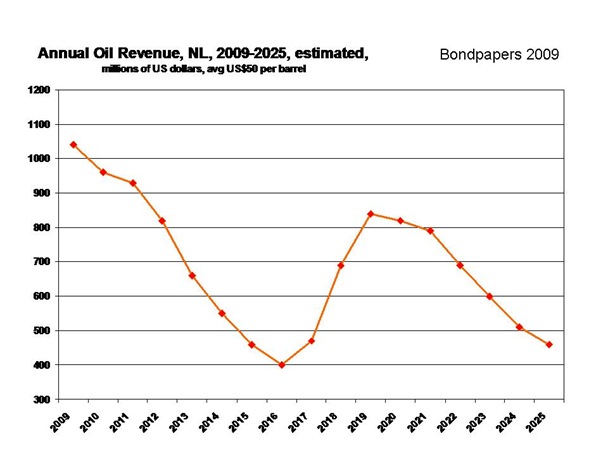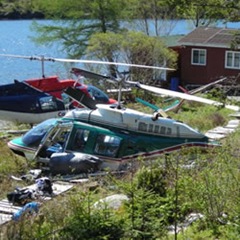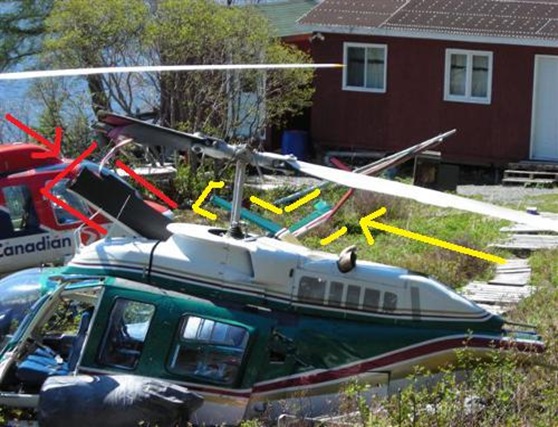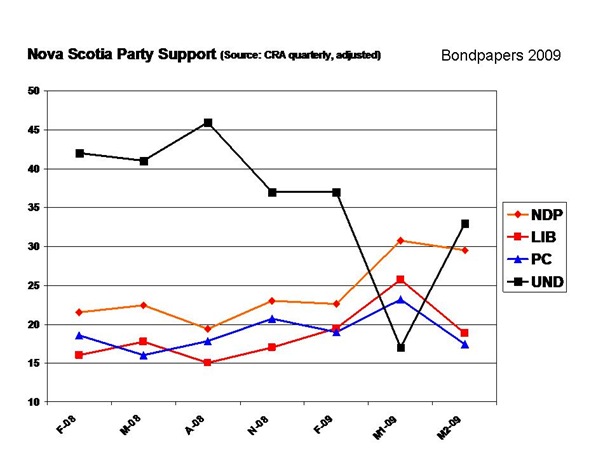When the provincial government announced its $800 million capital works “stimulus” package back in February, they claimed it would create 5,400 “person years” of employment. Well, they claimed lots of things but let’s just focus on the work claim.
Now for those who don’t know, a “person year” is basically the same as one person working for a year. Two people working for six months each is one “person year”.
Here are the quotes from the news release:
- It is anticipated the investment plan will create or sustain approximately 5,400 person years of employment this year.
- “…Approximately 5,400 person years throughout the province should go a long way in accomplishing just that…” [That’s a quote from Hisself]
Note here that neither of them was anywhere near the front end of the release. The Danny Williams quote is actually almost at the bitter end of not only his release but also the gigantic paragraph’s worth of words purportedly uttered by his prime ministerial lips.
That was February.
Fast forward to June.
Statistics Canada released figures showing that between May 2008 and May 2009, about 12,000 people found themselves sans paycheque in the youngest, coolest, hippest province in Canada.
With the fishery shut down in many parts of the province upwards of another 10,000 people are in jeopardy of not having much – if any income – this year.
And then less than a week later – and totally by coincidence, of course – the provincial government issues an “update” on its fiscal plan.
Suddenly, the plan contains twice as much cash as announced back in February and lo, and behold the claim of job creation has mushroomed.
Right there, in the very first sentence, the one where supposedly the most important information goes, there is this:
Provincial infrastructure projects totalling $1.6 billion will be tendered this fiscal year, creating an estimated 15,000 jobs (some seasonal) and providing significant economic stimulus to the economy of Newfoundland and Labrador.
Double the money and triple the job creation.
And there’s no more talk of this wussie thing, the “person year”. Now there’s a word everyone understands: “jobs”.
15,000 of them, we are told, right there in the very beginning of the news release so no one will miss it; not buried a raft of paragraphs down from the top – like say when workers comp has a potential identity theft problem – but right there in front, large as life.
First line.
The “lede” they call it in news circles.
With only the little bracketed aside that “some” will be seasonal.
The rest of this news release is also full of numbers. Lots of them. Bag fulls in fact. So many numbers that the release must have been slow going down the wires what with all the added weight, especially right there at the front end.
But that job number is curious because it is three times the original estimate.
That job number is curious because it is right there at the front and called jobs and it is curious because it comes only six days after the people who give accurate numbers tell us that the jobs losses in the province are bad.
How bad?
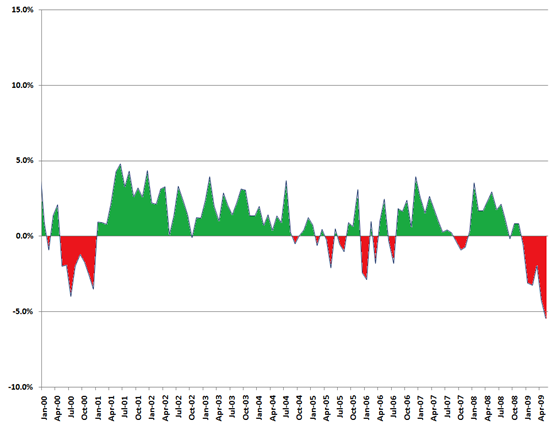
Here is a chart, shamelessly swiped from labradore that shows the percentage drops or hikes in employment comparing one month to another. “Periods in which the employment picture was better than the same month one year before are shown as green peaks. Periods in which it is worse are red valleys.”
Notice that the most recent month - at the far right - was the worst in the past decade and that the situation since last October has generally been on par with the worst of the last decade.
And if that was not evidence enough for you of the magnitude of the employment numbers, labradore produced a chart showing the same data going back as far as Stats Canada could.
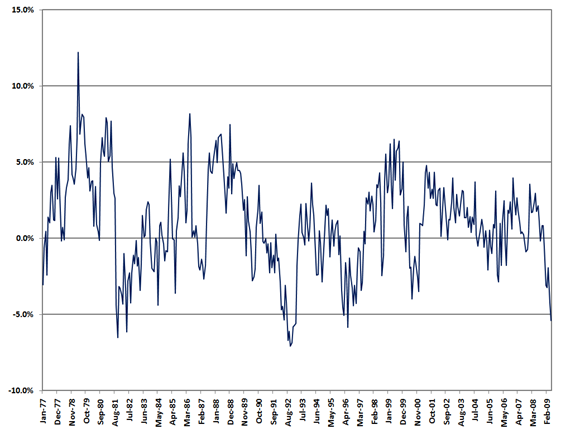
The current situation in Newfoundland and Labrador is on par with the three worst job loss periods since the late 1970s. if the fishery tanks as it now appears to be doing, we could be in for one of the worst times on record.
Now the provincial government’s massive numbers economic stimulus release did not come as an accident or as a matter of routine or out of some desire to merely ensure that the ordinary wretches of the happy province knew in detail what was going on.
The current administration is not a bunch known to be enamoured of public interest disclosure.
There was a reason behind it.
There was also a reason why the job creation figures were suddenly given prominence and, one suspects, inflated to such proportions.
It would come as no surprise to find out that there was some kind of minor political screaming going on this past week at the need to get some good news out there to counteract the Premier’s health care meltdown. The old boy busily defended himself by tossing out numbers about all the money that was being spent.
Coincidence?
We think not.
And then there were those Stats Can figures on employment.
And maybe, just maybe, in there as well, the government pollster might have coughed up some numbers in answer to questions available only to his client, the provincial government. Questions that ask for an assessment of government performance in this sector or another or on this or that issue.
Maybe the signs of confidence aren’t good.
Maybe the confidence in handling the economy question got a majority of negatives as it did at least once before with the current crowd. Negatives as big as the publicly reported positives. The kind of polling numbers that make Hisself sit up and take notice.
Or put a flag bag up, suddenly and surprisingly and inexplicably (unless you had the poll data).
Bad numbers.
The kind of numbers that put monsters under a politician’s bed.
No wonder the Premier and his fish minister looked really worried when the announced some sort of fisheries aid package will come along at some undefined point in the future, if necessary.
The reality of what is going on in the province – compared to the silly hype from government and other quarters – would be enough to give anyone the heebie-jeebies.
-srbp-



